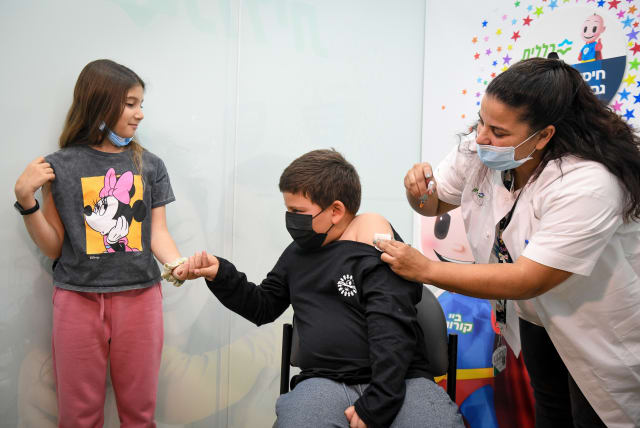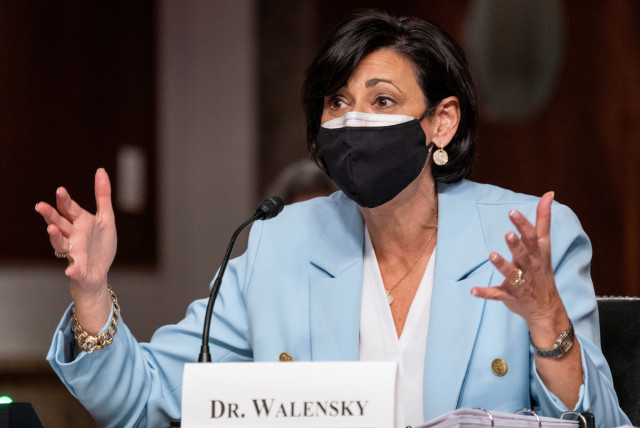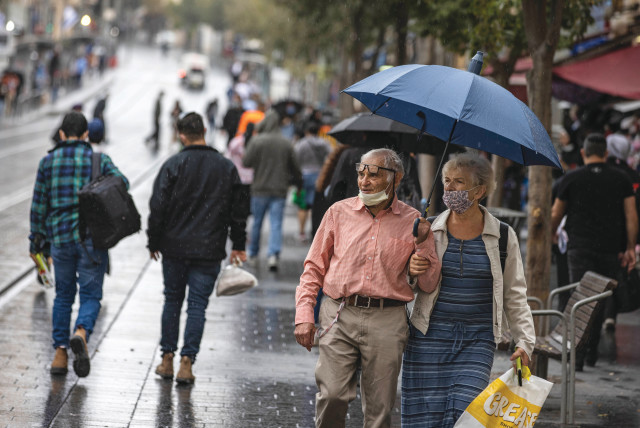Is COVID over? A requiem for the coronavirus pandemic

For many people, the arbitrary nature of the pandemic, with tough rules one day about things like masks, and then rules discarded the next, has left an imprint.
In the US, Centers for Disease Control and Prevention Director Rochelle Walensky announced she was stepping down on May 5. This surprise came days before the US ended the public health emergency focused on the COVID pandemic on May 11.
It was also the same day the World Health Organization had declared an end to the global health emergency of the pandemic.
The White House also announced the end of vaccine requirements for travelers; the requirement ended on May 11. Like many aspects of the pandemic, there was no transparency with the public about how all these developments appeared coordinated.
Is there a series of large scientific studies that showed suddenly that the pandemic emergency regulations, and often arbitrary policies, were no longer needed? What was the scientific reason for vaccine requirements for travelers in the first place, for instance? News reports don’t say. As all the pandemic-era policies quietly are shifted off stage, those who continue to feel unsafe will want these policies to return, while others who always thought the authoritarian policies were misguided will wonder what it was all for.
For many people, the arbitrary nature of the pandemic, with tough rules one day about things like masks, and then rules discarded the next, has left an imprint. There are those who want to demand that healthcare workers continue to wear masks. There are skeptics who feel they have been proven right by the changes in guidance on things like vaccines as they watch the waning immunity of the jab continue and see governments quietly stop recommending or pushing COVID vaccines.
For instance, Walensky said in May 2021, “I am encouraging all children to be vaccinated. And I am also encouraging children to ask for the vaccine.” However, in late March 2023, the WHO revised its guidelines, noting “the public health impact of vaccinating healthy children and adolescents is comparatively much lower than the established benefits of traditional essential vaccines for children – such as the rotavirus, measles, and pneumococcal conjugate vaccines,” the WHO’s Strategic Advisory Group of Experts said in a press release. In essence, the COVID shots that were pushed and mandated are now openly seen as not as effective as traditional vaccines.
It’s important to remember how we got here. Israel was one of the first countries to roll out mass vaccination, and its success was heralded as a bellwether for the world. The vaccination program began in late 2020. By the spring of 2021, many Israelis were “fully vaccinated,” the term then used to describe having two shots. In the US in May 2021, the CDC said “vaccinated” people didn’t need to wear masks. But worrying data emerged in the summer of 2021 showing that many vaccinated people were getting infected. Soon it was clear that vaccines didn’t prevent transmission.
The vaccine and children
In November 2021, Israel moved to vaccinate children over the age of five. As part of the pressure put on parents, various authorities also pressured unvaccinated children over the age of five to get tested all the time, either due to changing policies at school, or before entering restaurants, public pools and other facilities. The tests were burdensome, sometimes giving the child only a day to use a public pool before needing another test.
Most children who tested positive with COVID were not symptomatic, and there was lack of clarity about why unvaccinated kids should be banned from pools, since ostensibly the vaccinated adults were protected against COVID. Most Israelis did not make their kids get jabbed; by September 2022, only one in five had done this to their kids. Nevertheless, in June 2022 Israel began offering shots to kids over six months. Only 378 kids in the six month to five-year-old population of hundreds of thousands had been vaccinated by August. Basically, parents realized there was no reason to jab kids. Israel went quickly from a country that believed in vaccines in late 2020 to one that was skeptical by late 2021, and even more skeptical by late 2022.
This skepticism doesn’t exist with other vaccines.
People take vaccines for numerous other maladies such as diphtheria-tetanus-whooping cough, measles-mumps-rubella, hepatitis, rotavirus and the flu, and they continue to take them at a high rate. Only with COVID has the public realized it was highly misled when it came to kids. Yet the health authorities continued to push policies through 2022 that affected children, making them test all the time, forcing masks on them in schools, and other actions. The abuse in Israel was not as bad as the abuse they suffered when traveling. They had to test before flying; and then, on planes to the US, those over three years old had to be muzzled in a mask, even as adults could remove masks to drink alcohol and eat. I’ll never forget my four-year-old child being shouted at before boarding a flight, and my wife being ordered to restrain him and mask him.
Our younger son has a speech impediment, which meant seeing faces was quite important to him. There was no scientific reason to force a mask on him, when even the WHO said kids under age five should not be masked.
Confusing current events
The pandemic has been bewildering for those who tried to follow the developments. For instance, a recent article in Scientific American suggested that “placing randomized trials above other types of research, such as observational, lab and modeling studies, has interfered with the COVID response.” This would seem to be in contrast to the usual belief that trials and studies are important for learning about public health rather than just “modeling.”
It was problematic modeling that likely led to mandates for vaccines and the attempts to dismiss workers who were unvaccinated and prevent people from traveling if they didn’t get jabbed enough. Models had claimed that most of society needed to be vaccinated to reopen, that this would stop the spread of COVID. Countries that had a zero-COVID approach like New Zealand attempted this. Once it was clear that COVID wasn’t merely causing a few “breakthrough infections” to the vaccinated, but in fact most vaccinated people got infected and transmitted the virus, then it became less clear why vaccine mandates were important or why green passes to use public areas were necessary.
Walensky had claimed in March 2021, speaking on The Rachael Maddow Show on MSNBC, that CDC data showed that vaccinated people “don’t carry the virus” and “don’t get sick.” Reuters did a look back at the changing rhetoric on vaccines and noted that different variants meant different guidelines. Experts claimed that the Delta variant was more contagious and required more antibodies for confronting it. “On April 2 [2021], a CDC study found that the mRNA vaccines were highly effective in preventing symptomatic infection in randomized placebo-controlled Phase III trials.” However, even as the booster shots were tweaked to deal with new variants, they tended to be one step behind the shifting variants.
The problem is that the myriad changes over the years have left many people skeptical about what happened in the first place. How can lessons be learned from the pandemic, when three years after it was declared, very little is even known about how it started. Obfuscation has meant that basic data on what happened in Wuhan in late 2019 are still obscured. For instance, a Chinese whistleblower who spoke out about the initial infections was detained in February 2020 and disappeared, until being released in April 2023. Even as the WHO and the US were about to call an end to the emergency, new controversies erupted about mysterious data from the Wuhan market. It turned out later that this data, claiming to show the presence of raccoon dogs, was not conclusive about the pandemic’s origins. Yet media had, for a few days, trumpeted the data as the “strongest” evidence about the origins of COVID. In fact, it was shown, like so much of the data from the pandemic, to be too early, too limited and misleading.
What we know about Wuhan is that there was a leading research lab and China’s version of their CDC in the city not far from where the outbreak began in 2019. Beijing systematically downplayed fears of a pandemic in early 2020, first claiming the virus wasn’t transmitting between people in January, and then claiming it was contained in February 2020. The first joint WHO-China study in February downplayed the pandemic risk. Global health authorities largely relied on China for guidance, adopting lockdowns, masks and the infamous “two weeks to slow the spread” narrative. Years later, the market where some alleged the outbreak began is still open, and we are no closer to finding the actual origin of the pandemic. Western social media that tried to censor claims of a “lab leak” in Wuhan have now relented, as experts and government authorities increasingly lean toward the lab leak hypothesis as a possible ground zero.
We also now know that concerns about virus research in Wuhan prior to the pandemic and the presence of the Wuhan lab and Chinese CDC raise alarms about what happened in that city in 2019. How did the pandemic begin in a city with the world’s leading experts studying this kind of virus, and how did the Chinese not prevent and detect it immediately? Questions about US government grants that were given to “prevent pandemics” are also under the spotlight. Why wasn’t the pandemic prevented when it began in a city that had the best health officials and lab present just blocks away from the first cases? If you can’t prevent a pandemic in a modern city with the leading experts a few blocks away from where it begins, how would you prevent it in a rural area?
Masks and similar results
Another issue that has bedeviled those suffering through the COVID regime was the guidance on masks. In the US in August 2021, the CDC head claimed that children needed to be masked and that everyone, whether vaccinated or not, needed to wear masks. Why did they need masks if the vaccines were effective? The US guidelines on masks changed often, and they rarely made sense. Once it was known that vaccinated people got infected and that people without symptoms spread the virus, there was a desire to re-mask people. Walensky claimed in November 2021 that masks reduced the chance of infection by 80%. But why did masks matter if most people had few or no symptoms? Historically, people didn’t wear masks against the flu, so what was the point? Eventually, authorities agreed there was no point.
Long-term data have also shown that most of the strategies countries pursued – from lockdowns to basically doing nothing – had similar long-term results. Countries like Sweden that never locked down performed the same or better than those that did. It’s also not clear whether countries in the global south, where vaccination rates were lower, had more deaths. This was despite early claims that looked at a few weeks of data and would make extraordinary claims about whether various strategies were working. The problem during the pandemic was that authorities often tried to spread fear through data, such as telling us daily how many were infected. We were presented with charts showing how COVID cases were rising or falling over the past weeks, with authorities asserting that such a short time frame would help us know the future.
Almost everything that was said to work during the pandemic has been shown to be problematic. Ventilators likely did more harm than good; more than 50% of people put on them died, and guidelines shifted radically on their use. It wasn’t necessary to check temperatures of people daily or test them daily. Sending the sick to nursing homes in the US was a disaster, and most countries didn’t send sick people to nursing homes, spreading the pandemic to the most vulnerable elderly people. Social distancing guidelines also changed in late 2022; the public often wasn’t informed, but places stopped putting those signs demanding we stay six feet (2 meters) apart.
There has been pushback by the US Congress not only on the issue of whether COVID leaked from a lab in Wuhan but also on issues such as guidance on masking and school closures. Famed COVID-era bureaucrats, such as health expert Anthony Fauci and educator Randy Weingarten, have discussed their changing views on what happened. Other key individuals involved have come under scrutiny, such as those involved in research with viruses.
‘Science’
The general theme of changing views on things like masks and school closures is simply that the “science” changed. Were schools closed to protect kids or to reduce transmission among adults?
A lot of policies during the pandemic were not based directly on science; they were designed to get people to do something else. For instance, if people would be told to test daily or were prevented from going to restaurants, it was about removing the unvaccinated from society to coerce them to get jabbed. In Israel in September 2021, ministers were overheard on a hot mic saying that the green pass for restaurants and pools was unnecessary, but that it was used to coerce others to get vaccinated, which health authorities believed at the time was the way out of the pandemic. The authorities knew that the green pass wasn’t being enforced in some areas of Israel, such as the Arab sector, meaning that it was being enforced more harshly in some areas to get people to get vaccinated to make up for other populations not being jabbed. This was a numbers game. It was about getting society, to a certain percentage, jabbed. By the time it happened, everyone realized that the vaccines had waning immunity anyway, and new variants made them less relevant.
At one point it became a theme to blame the unvaccinated for the continuing pandemic (US President Joe Biden called it a “pandemic of the unvaccinated”) and to claim they were a danger to society. Years later, it’s unclear whether the overall outcome today is different for the unvaccinated or vaccinated, especially since most people have not had all their “boosters.” Yet, during the pandemic, commentators suggested denying care to unvaccinated patients, and reports claimed that hospitals were overwhelmed by unvaccinated people.
Moving on
A lot of us want to get the pandemic behind us. However, it’s important to ask about how media and health authorities misled us. When they sought to get children vaccinated, articles appeared about kids being hospitalized to make parents fearful, and regulations made life harder for unvaccinated kids. Yet, the WHO continued to note that COVID caused less severe illness in kids and often went undetected. Articles about “record hospitalization rates” for kids in January 2022 and claims that hospitalizations for kids “loom large” deserve to be revisited based on current knowledge about outcomes among children. By March 2023, experts had admitted – what was known in March 2020 – that kids were at low risk.
Another claim that deserves to be revisited is some media blaming unvaccinated people for new variants. In February 2022, the World Economic Forum claimed that “vaccines lower risk of new variants,” and in July 2021 CNN claimed “unvaccinated people are ‘variant factories’” according to an “infectious disease expert.” In January 2022, Health Affairs claimed “global vaccine inequality led to the Omicron variant.” NBC and CNN parroted this view, but it’s not clear today whether this is accurate. No one seems to be claiming today that unvaccinated areas are “variant factories.” This was a talking point likely put out to get people vaccinated, not based on evidence, and that’s why the narrative stopped.
When we start adding it all up, the entire pandemic-era response needs to be revisited. We don’t know how it began. We now know that most elements of the response either didn’t work or worked only at the margins – elements such as social distancing, daily temperature checks, masks, ventilators, sending the sick to nursing homes, banning travel, banning the unvaccinated from travel, pushing green passes on people, encouraging children as young as six months to get vaccinated, explaining how and why variants emerged, whether people need more vaccine boosters, school closures and other decisions.
As the pandemic supposedly ends, it’s unclear what we’ve learned and whether the experts who put in place arbitrary and often draconian measures will revisit their decisions and see what was learned in the long term with the significant data we now have.
Jerusalem Post Store
`; document.getElementById("linkPremium").innerHTML = cont; var divWithLink = document.getElementById("premium-link"); if (divWithLink !== null && divWithLink !== 'undefined') { divWithLink.style.border = "solid 1px #cb0f3e"; divWithLink.style.textAlign = "center"; divWithLink.style.marginBottom = "15px"; divWithLink.style.marginTop = "15px"; divWithLink.style.width = "100%"; divWithLink.style.backgroundColor = "#122952"; divWithLink.style.color = "#ffffff"; divWithLink.style.lineHeight = "1.5"; } } (function (v, i) { });


